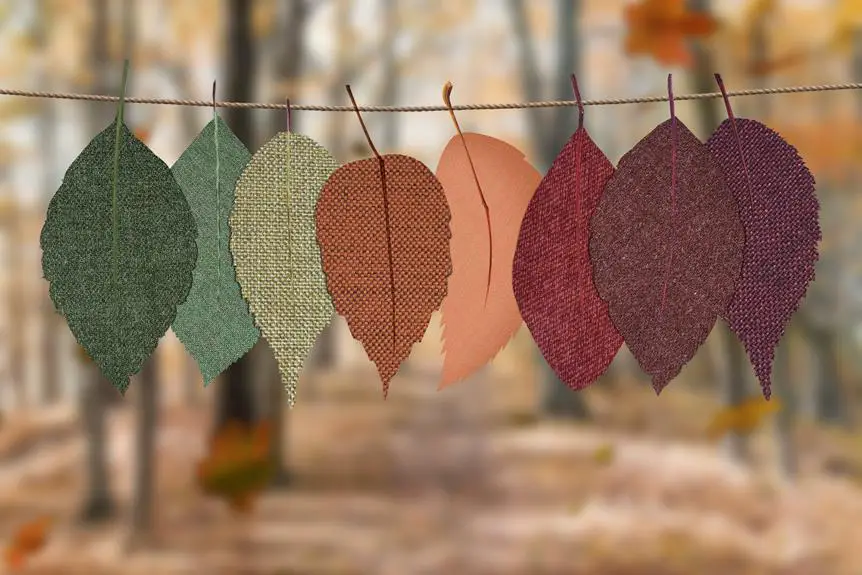You know the feeling when you accidentally spill something on your favorite fabric and think it's ruined? Don't worry, with the right techniques, you can conquer those stubborn stains.
Mastering the art of removing tough stains from fabrics is an essential skill. By following these proven methods, you'll be able to tackle any stain like a pro. Whether it's a grease stain, wine spill, or ink blot, you'll learn how to identify the type of stain and pre-treat it effectively.
From natural remedies to commercial stain removers, you'll discover the best approaches for different fabrics. With these expert tips, you'll be able to remove stubborn stains and keep your fabrics looking fresh and clean.
Key Takeaways
- Identify the type of stain (oil-based, water-based, protein-based, or dye-based) and treat accordingly
- Choose the appropriate stain removal method based on the type of stain
- Consider using natural remedies such as vinegar, lemon juice, and baking soda for stain removal
- Utilize commercial stain removers with enzymes or oxygen-based bleach for effective results
Identifying the Stain Type
To identify the stain type on your fabric, start by examining the color, texture, and location of the stain. Different types of stains require different treatment methods for effective removal.
The first step is to determine if the stain is oil-based, water-based, protein-based, or dye-based. Oil-based stains, like grease or butter, can be treated with dish soap or a pre-treatment stain remover. Water-based stains, such as juice or tea, can often be removed with a mixture of water and vinegar. Protein-based stains, like blood or sweat, may need an enzymatic cleaner to break down the proteins before washing. Dye-based stains, such as those from ink or wine, can be challenging and may require a specific stain remover or professional treatment.
Once you've identified the stain type, it's essential to act quickly. The longer a stain sits, the more difficult it becomes to remove. Always test any treatment on a small, inconspicuous area of the fabric first to ensure it won't cause further damage.
Pre-Treating the Stain
Before treating the stain, gather the necessary supplies such as a mild detergent and a soft-bristled brush. Pre-treating the stain is an essential step in the stain removal process. It helps to break down the stain and prepare the fabric for a thorough cleaning. There are various stain pre-treatment techniques that can be effective, depending on the type of stain. Here are some effective pre-treatment products and techniques to consider:
| Technique | Description | Example Product |
|---|---|---|
| Spot Treatment | Applying a small amount of detergent directly to the stain and gently rubbing it in with a soft-bristled brush. | Liquid laundry detergent |
| Soaking | Soaking the stained area in a mixture of water and oxygen-based bleach before washing. | Oxygen-based bleach powder |
| Enzyme-Based Products | Using products containing enzymes that target specific types of stains, such as protein-based or oil-based stains. | Enzyme-based stain remover |
Choosing the Right Stain Removal Method
When tackling stubborn stains on fabrics, start by assessing the type of stain and selecting the appropriate stain removal method for best results. Different stains require different approaches for effective removal.
For organic stains like food and beverage spills, enzymatic stain removers work wonders due to their ability to break down proteins and other organic compounds.
For oil-based stains, using a dishwashing detergent or a pre-treatment with baking soda can help lift the grease off the fabric.
When dealing with ink stains, rubbing alcohol or a mixture of vinegar and dish soap can be effective DIY stain removers.
For protein-based stains like blood, using cold water and enzyme-based cleaners can prevent the stain from setting.
Additionally, for general stain removal hacks, consider using a mixture of hydrogen peroxide and dish soap for a powerful DIY stain remover.
Using Natural Remedies
You can effectively remove stubborn stains from fabrics using natural remedies such as vinegar, lemon juice, and baking soda. Homemade remedies offer eco-friendly options that are gentle on fabrics and safe for the environment.
Vinegar is a versatile stain remover that can tackle a variety of stains, from coffee and wine to sweat and deodorant marks. Mix equal parts of white vinegar and water, then apply it to the stain and gently blot with a clean cloth.
Lemon juice is another powerful natural stain fighter, particularly effective on rust, ink, and berry stains. Saturate the stained area with lemon juice and let it sit for a few minutes before rinsing.
Baking soda is a great option for removing odors and lifting grease or oil-based stains. Make a paste with water and baking soda, apply it to the stain, and let it dry before brushing off the residue.
These homemade remedies offer a sustainable and cost-effective approach to keeping your fabrics pristine while minimizing your environmental impact.
Utilizing Commercial Stain Removers
To effectively tackle tough stains on fabrics, consider utilizing commercial stain removers that are specifically formulated to target and lift stubborn marks and blemishes. When choosing a commercial stain remover, it's essential to understand the characteristics that make them effective and safe for stain removal:
- Stain Remover Effectiveness
- Look for commercial stain removers that contain enzymes or oxygen-based bleaching agents. These components effectively break down and lift tough stains like coffee, wine, or grass.
- Consider choosing a product with a pre-treatment option for heavily soiled areas. Pre-treating the stain before washing can significantly enhance the effectiveness of the stain remover.
- Stain Removal Safety
- Always read the manufacturer's instructions and follow the recommended guidelines for usage and safety precautions.
- Test the stain remover on a small, inconspicuous area of the fabric to ensure that it doesn't cause any discoloration or damage before applying it to the stained area.
Applying Stain Removal Techniques for Specific Fabrics
Now it's time to tackle specific fabric types when it comes to stain removal.
You'll learn how to effectively remove stains from delicate silk.
Handle wool fabric stains.
And conquer tough stains on cotton.
Each fabric requires a unique approach to ensure successful stain removal.
Silk Stain Removal
When removing stains from silk, it's important to proceed with caution and gentle techniques to avoid damaging the delicate fabric. To effectively remove stains from silk while preserving its delicate nature, consider the following tips:
- Immediate Action: Act quickly to blot the stain with a clean cloth to absorb excess liquid without rubbing, which can set the stain further.
- Gentle Cleansing: Use a mild detergent diluted in cold water to gently dab at the stained area, and avoid using harsh chemicals or vigorous scrubbing.
Wool Fabric Techniques
For removing stains from wool fabric, assess the type of stain and begin by blotting the area with a clean cloth to absorb excess liquid without spreading it further. Avoid rubbing the stain, as this can push it deeper into the fibers. Here are some specialized treatments for different types of stains on wool fabric:
| Stain Type | Treatment |
|---|---|
| Grease or oil | Sprinkle cornstarch, let sit, then brush off |
| Ink | Blot with rubbing alcohol, then vinegar solution |
| Red wine | Cover with salt, then rinse with club soda |
| Blood | Cold water soak, then enzyme detergent |
| Mud | Let dry, then brush off, followed by vinegar solution |
Wool preservation is key, so always test any treatment on a small, hidden area first.
Cotton Stain Removal
To tackle cotton stains effectively, follow these steps:
- Assess the type of stain and begin by blotting the area with a clean cloth to absorb excess liquid without spreading it further.
Once you've done this, consider the following additional steps:
- Fabric Dyeing
If the stain has caused discoloration, you may need to consider fabric dyeing to restore the cotton to its original color. Always test the dye on a small, inconspicuous area first to ensure it will match the rest of the fabric.
- Stain Prevention
To prevent future stains, consider using a fabric protector spray on your cotton items. This can help repel liquids and make future stain removal easier.
Preventing Future Stains
After you have successfully removed a stubborn stain from your fabric, it's important to take steps to prevent future stains. Consider investing in stain-resistant fabrics for frequently used items like tablecloths and upholstery. These fabrics are designed to repel stains and make cleanup easier.
Additionally, adjust your laundry routine to include using a high-quality stain remover as a pre-treatment for heavily soiled items before washing. This can help prevent stains from setting in and becoming more difficult to remove.
Making small lifestyle changes can also contribute to preventing future stains. For instance, using placemats and coasters can protect your surfaces from spills and stains. Encourage family members and guests to do the same.
Furthermore, consider fabric protection products that can be applied to upholstery, carpets, and clothing to create a barrier against spills and stains. These products can provide valuable time to clean up a spill before it becomes a stubborn stain.
Frequently Asked Questions
Can I Use the Same Stain Removal Method for All Types of Fabrics?
You should consider fabric compatibility when it comes to stain removal. Different fabrics may require specialized treatments. Always check the care label and test any new stain removal method on a small, inconspicuous area first.
How Do I Remove Stains From Delicate Fabrics Like Silk or Wool?
To remove wine stains from delicate fabrics like silk or wool, start by blotting the stain with a clean cloth. Then, apply a gentle stain remover and let it sit before washing as usual. Always test in a hidden spot first.
Are There Any Natural Remedies That Can Remove Tough Stains Like Ink or Grease?
To remove tough stains like ink or grease from fabrics, try natural remedies and eco-friendly products. DIY stain removal and alternative methods can be effective. Vinegar, baking soda, and lemon juice are great options.
Do I Need to Test the Stain Remover on a Small Area of Fabric Before Applying It to the Entire Stain?
Before applying the stain remover to the entire stain, it's crucial to test it on a small area of fabric. This testing process ensures fabric compatibility and avoids potential damage. Pre-treating techniques and stain prevention are also important to consider.
What Can I Do to Prevent Future Stains From Setting in on My Fabrics?
To prevent future stains from setting in on your fabrics, consider using preventive measures like stain-resistant treatments and fabric protection. Additionally, practicing good fabric care, such as prompt cleaning and proper storage, can help maintain fabric quality.
- A Guide to Washing Polyester Suede Fabric - July 12, 2025
- Where to Buy Suede Fabric in Singapore - July 12, 2025
- How to Remove Stains From Faux Suede Fabric - July 12, 2025





